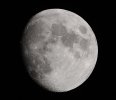Odds of mega-quake rise at high tide: study
September 12, 2016
The same gravitational force that creates high tides when the Moon and Sun align may also play a role in triggering major earthquakes, according to a study released Monday.
Better understanding of this mechanism could help predict when known faults are more likely to produce killer quakes, researchers said.
"Large earthquakes are more probable during periods of high tidal stress," the scientists concluded in the peer-reviewed journal Nature Geoscience.
When the tug of gravity is strongest, they added, "the probability of a tiny rock failure expanding to a gigantic rupture increases."
For centuries after the discovery that solar and lunar forces affect the ocean tides, scientists speculated whether they also cause Earth's crust to buckle and fracture.
But only recently has statistical research started to establish a firm link between planetary alignments and tremblors.
Satoshi Ide, a professor at the University of Tokyo, and colleagues zeroed in on large earthquakes—magnitude 5.5 or greater—around the world over the last two decades.
His team reconstructed the size of gravitational pull, known as "tidal stress", in the two weeks prior to each tremor.
They found no clear correlation with smaller quakes.
Many of the largest earthquakes, however, occurred during periods when the pull of the Moon and Sun were particularly forceful.
These included the December 26, 2004 quake in Sumatra, which ravaged a large swath of the island and delivered a deadly tsunami towards south and southeast Asia. Some 220,000 people died.
Spring tide danger
The same link held for two other mega-quakes, the 2010 tremblor near Maule, Chile, and the 9.0 magnitude quake off the coast of Japan's Honshu Island that claimed about 19,000 lives and crippled the Fukushima nuclear power plant in 2011.
Exactly how large earthquakes start and evolve is still poorly understood.
One theory suggests that all quakes begin with a tiny fracture and grow, in a cascading process, into large-scale ruptures.
If this is true, then the new study suggests that the likelihood of this happening increases during the Spring tide, the period just after a new or full Moon.
The findings "can be used to improve probabilistic earthquake forecasting, especially for extremely large earthquakes," Ide and colleagues concluded.
Every day, there are numerous small earthquakes worldwide.
But only a tiny fraction of these events grows into the kind of giant tremor that can topple buildings and launch devastating tsunamis.
The new results, Ide told AFP—derived from a statistical analysis of a large number of tremblors—cannot explain why some small quakes turn into mega ones at Spring tide, while others do not.







